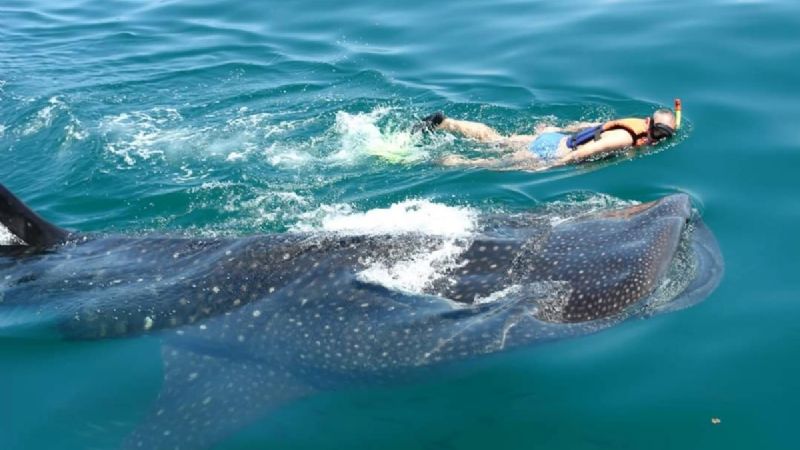During this month of September, it is possible to spot the whale shark (Rhincodon typus) in the waters of the port. On the continental shelf, just a few miles off the coast, fishermen have been amazed to be in close proximity to this enormous species.
This shark is often observed by tourists aboard boats on the Yucatán Peninsula, especially on Holbox Island on the northeastern coast of the state of Quintana Roo, during the months of May through September.
These sharks tend to approach the coasts of the Eastern Coastline in this month, due to the proximity of Holbox to this port. The whale sharks have surprised fishermen in El Cuyo during this Patriotic Month, allowing several of them to have the luck of seeing this species up close. One of them is Yahir Medina, who shared his experience:
“Despite their enormous size, they are docile fish, which sometimes allows fishermen to swim alongside them. They are currently listed as vulnerable species, but in several parts of the world, they are still hunted. Their hunting is prohibited and penalized, as well as their sale, import, and export for commercial purposes,” he pointed out.
He recalled that whale sharks are present in all tropical seas and are known to migrate to the continental shelf of the coast each spring.
The whale shark is an elasmobranch of the Orectolobiformes order, the only member of the Rhincodontidae family, and the Rhincodon genus. It is the largest fish in the world, reaching approximately 12 meters in length. It feeds through filtration and inhabits warm tropical and subtropical waters. It can have a body mass of up to 19,000 kilograms.
The whale shark is characterized by its flattened head, which features a blunt snout above its mouth with small barbels protruding from its nostrils. Its dorsal and lateral sides are gray to brown, with white spots among pale vertical and horizontal stripes, while its belly is white. Its dorsal fins are oriented towards the rear of the body, which ends in a massive bifurcated caudal fin.
Currently, non-extractive utilization, based on observing and swimming with the whale shark, constitutes an important source of income for communities surrounding aggregation sites.
On Holbox Island, encounter and swim tours with whale sharks are offered, following certain rules and accompanied by personnel from the National Commission of Natural Protected Areas.
It is worth noting that for over 10 years, Pronatura Peninsula de Yucatán A.C., in collaboration with the Center for Research and Advanced Studies Unit Mérida (Cinvestav-IPN), has conducted uninterrupted habitat studies of the whale shark in the Mexican Caribbean.
TYT Newsroom




1 comment
Miss so much visiting Isla Mujeres! Six times I’ve gone and can’t wait to go back!